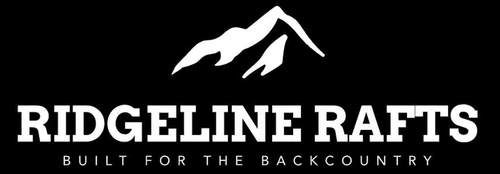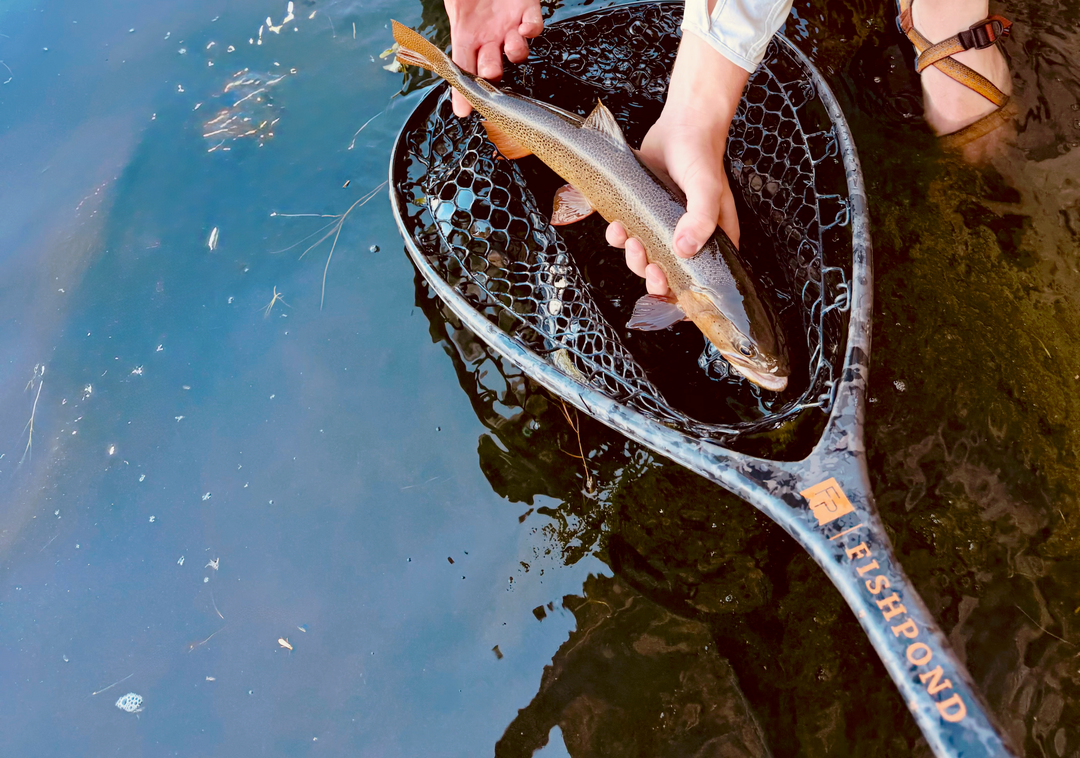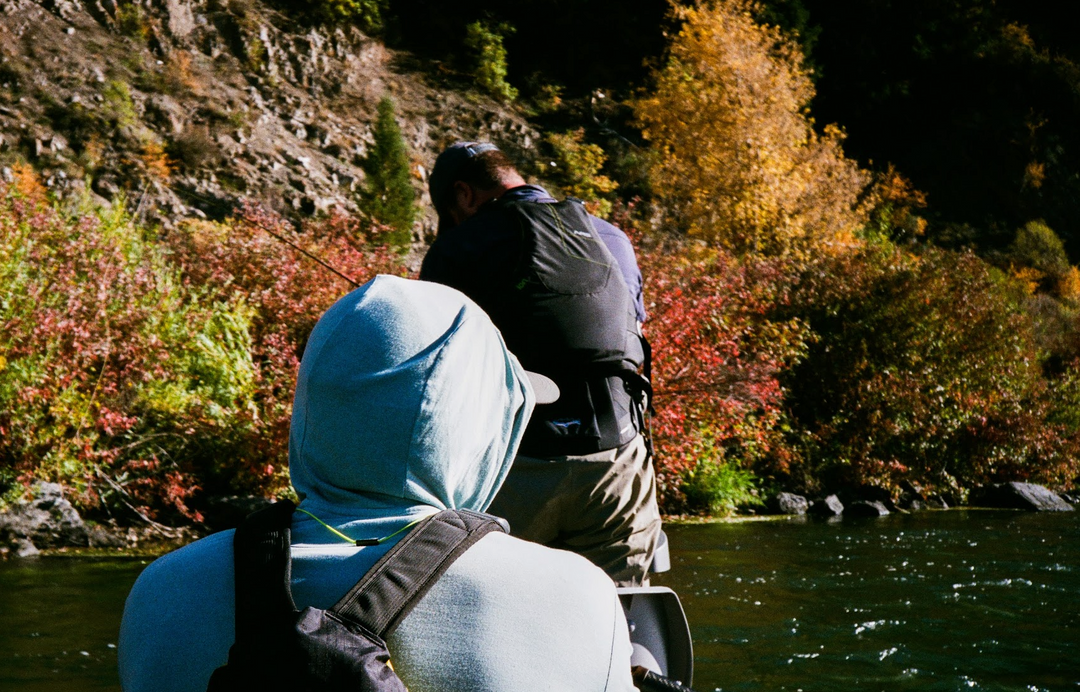From Trout Parks to Tailwater Trophies

This past weekend I had the chance to take my father-in-law (Papa Moore) fly fishing on the Green River below Flaming Gorge Dam in Utah. We made some great memories together, hooked into some big fish on dries, and came away with a few takeaways that can help anyone—whether it’s your first or fiftieth float—make the most of a day on the water.
A Bucket List Trip

Papa Moore lives in St. Louis, Missouri, where most of his trout fishing is limited to stocked rainbows in trout parks. That kind of fishing scratches the itch for a while, but after years of catching 10–12" stockers, the pull to head west for wild browns, chunky cutthroats, and big rainbows becomes impossible to ignore.
This trip to the Green River, Utah, had been on my bucket list for the boys in the family to see for years. With Papa Moore recently retired, and in town for a visit it was the perfect time to check it off.
The Green is only about 3.5 hours east of Salt Lake City, located on the Colorado and Wyoming border. The Green has something to offer almost everyone regardless if you have a drift boat, raft, or are restricted to walking and wading. If you're planning a trip to the Green the best way to explore the Green, in my opinion, is fishing from a boat. This leaves no portion of the river off limits and giving you access to the full scenic Green River that can be inaccessible to hiking regardless of how ambitious you are.
We debated a long day trip but ended up turning it into an overnight (with both our wive's blessings). We floated the A Section—just below Flaming Gorge Dam—both days. One of the great things about this section is you can rip through it in a couple hours hitting all the honey holes aggressively and pushing through the slower water or slow it down and stretch the float into a full day. We chose the slower route, giving ourselves time to soak in the desert scenery and work the crystal clear emerald green water.
We rolled into Dutch John (where all the lodging and fly shops are) Friday afternoon, finished shuttle by 3:00 pm, and still had five solid hours of fishing light. The river had cooled off since the summer hatches wrapped up, making the fishing tougher than usual, but we put fish in the net both days despite not seeing another boat hook into fish in 2 days (which is exceedingly rare on this river which boasts a fish population of over 5,000 fish per mile). Most of the action came in the first half of each float, with things slowing as we drifted downstream past the bulk of the rapids toward Dripping Springs takeout.
Since most of Papa Moore’s fishing has been with a bobber-and-indicator, I wanted him to get the full famous Green River experience: big dry flies and foam hoppers. There are a number of fish species here, but the primary is the brown trout (the average size trout is 15-16" with 25% of the fish being over 17").
This river is iconic for being able to fish dries and get eats year round (some of my best days have been in the dead of winter without an animal or soul in sight.) It’s not the easiest way to introduce folks to fishing from a boat, since casting dries to fast-moving banks demands more accuracy than tossing an indicator rig, but the payoff is hard to beat. We fished single and double hopper rigs, plus some hopper-droppers, but every fish that made it to the net came on top. Big eats, big smiles, and exactly the kind of moments you hope for on this river despite it being slower than usual.
Even with the fishing slower than usual, the Green still lived up to its reputation as one of the best dry fly fisheries in the West. Safe to say, I think I've convinced him to make another trip.
Turning Trips into Tips
I love trip stories and wish more brands did them, but I also want them to be useful for your own time on the water. Reflecting on the weekend, three things stood out that can make a huge difference when fly fishing the Green River—or any river, really:
-
Casting is critical
-
Understanding structure is everything
-
Rowing is the silent skill that catches more fish
Let’s dig in.

1. Casting is Critical
Fishing from a boat exposes your casting skills more than any other style of fly fishing. On most trout rivers you often get just one shot at a bank, a pocket, or a riffle before the boat slides past (the Green is no exception). If your cast is late or off target, that opportunity is gone and you potentially wont get another shot at that hole till the next day if you happen to float the same blue line on a map again.
Here’s the truth:
-
It doesn’t matter if you have the best flies in the world if you can’t put them where they need to be.
-
It doesn’t matter if you’ve got a $1,000 rod if your cast can’t reach the holding water.
-
It doesn’t matter if you know what structure to target if you can’t actually hit it when it counts.
You are leaving fish on the table every single time you go out fishing if you can't cast well. One of the things that fishing out of a boat does is really expose your casting ability and the best way to prepare to fish out of a boat is to practice casting.
If you are lucky enough to live in an area with a local fly shop the more than likely offer casting classes for free or a small fee (which is beyond worth it). If you haven't taken one of these classes go sign up for one right now. It will help give you a great foundation to help your backyard, parking lot, or park practice be much more productive. After you've taken a class (there are countless Youtube resources if you don't have a local fly shop that can get you started on the right foot) you need to practice consistently and often; especially towards the beginning of your time fly fishing.
Starting off just go somewhere with wide open space and work on your cast so that it become natural and effortless. Find a target or make a target (hoola hoops in various sizes are the classic tool) and then work on hitting that target repeatedly. Once you can do that start doing it in as few false casts as possible.
This simple drill directly translates to fishing on a boat. You frequently get 1 shot at a target and if you don't hit it you don't get a second chance because you're moving downstream away from it. The better you are at hitting targets with as few casts as possible it skyrockets the odds of you hooking into better quantities and quality trout.
2. Understanding River Structure

The Green River, Utah, is full of world-class trout habitat—but only if you know what to look for. Trout don’t hold randomly; they sit in specific types of water for food, cover, and rest. If you don’t recognize those spots as you float by, you’ll miss fish all day.
-
If you're on a guided fly fishing trip or just fishing with a buddy who has a boat and you hear them give directions like "hit the top of this riffle coming up on our right" but you have no idea what a riffle is by the time you figure it out you could be 10 feet past it already - opportunity missed.
-
If you know what an eddy is but don't understand how they actually work and your fly gets dragged out every time you put your fly in the eddy - opportunity missed.
-
If you look at the raging water coming off the sides of a large rock and think there is no way a fish could be around that, you just missed some of the best water in a river system right behind that rock and the slow seams behind it - opportunity missed.
Doing a bit of research and really learning about all the different types of structure that exists in a trout stream is a guarantee in helping stack the odds in your favor.
Take some time to learn the different trout-holding structures—riffles, seams, eddies, tailouts, and pocket water—before you fish. A little knowledge goes a long way toward turning missed opportunities into hooked trout.
3. Rowing: The Silent Skill
When people start looking at getting a boat they are almost exclusively thinking about fishing from the front of the boat making that big hero cast towards a bank and then setting the hook on that toad of a cutty that just annihilated your salmonfly. But the truth is, the person on the oars often determines how many fish get caught.
A well-rowed boat gives anglers better shots, slower drifts, and more opportunities. A poorly rowed boat? It doesn’t matter how good you are with a rod—you’ll be fishing out of position all day.
On our trip, I had to row aggressively to give Papa Moore the best chance to connect. That meant slowing down with big backstrokes to buy him more time, ferrying quickly from one bank to the other to hit every piece of prime water, and threading through boulder fields to shorten casts.
The rafts we make here at Ridgeline are built for pure fly fishing performance. I wanted a boat that could tackle anything the miles of western water could throw at it and be chomping at the bit for more the following day. This type of rowing is taxing on the body and doing in a boat that isn't designed well can completely ruin a trip if you only have 1 rower. These rafts work for you, not against you. The easier a boat is to row the easier it will be to get your boat into the correct position time and time again over the course of a day.
Rowing has been and always will be the silent skill that catches more fish. The best anglers are frequently the best rowers, so if you want to be a better angler invest in a boat that you will want to row.
Wrapping Up

Fly fishing the Green River, Utah, is about more than just catching trout—it’s about the whole experience. From towering red rock canyon walls, sandy beaches, to the turquoise water to those explosive hopper eats, it’s a river every fly angler should float at least once.
But if you really want to make the most of your trip, focus on three things: practice your casting, learn how to read river structure, and either learn to row well yourself or fish with someone who can. Do those, and you’ll not only catch more fish—you’ll enjoy the Green for everything it has to offer.




